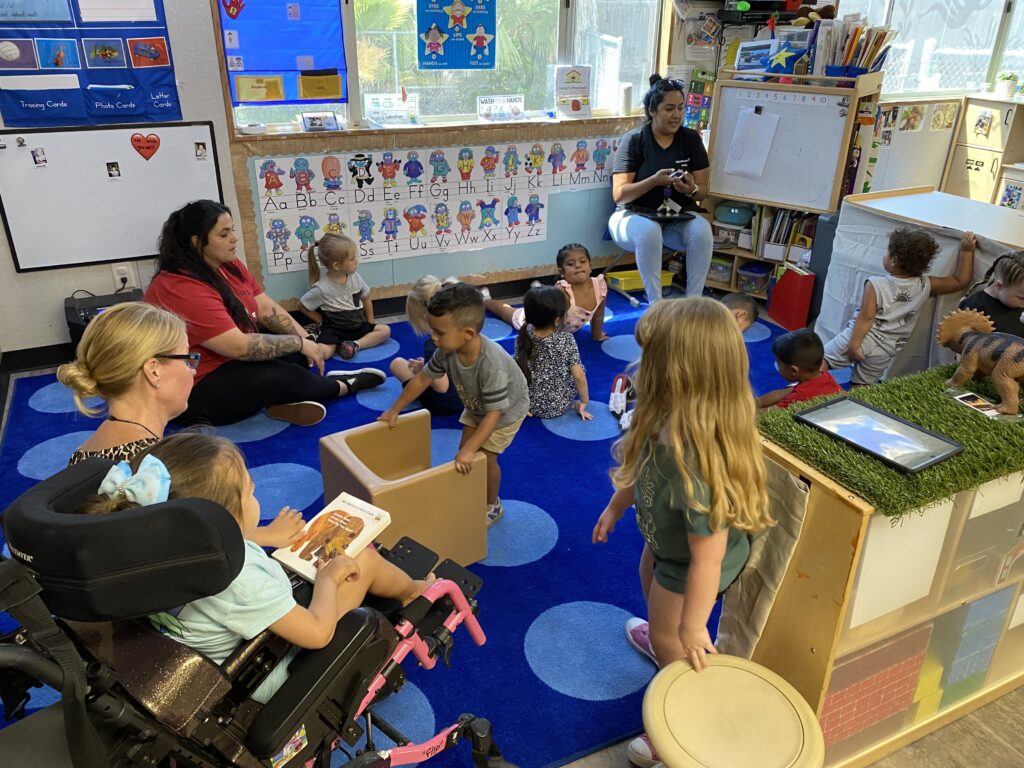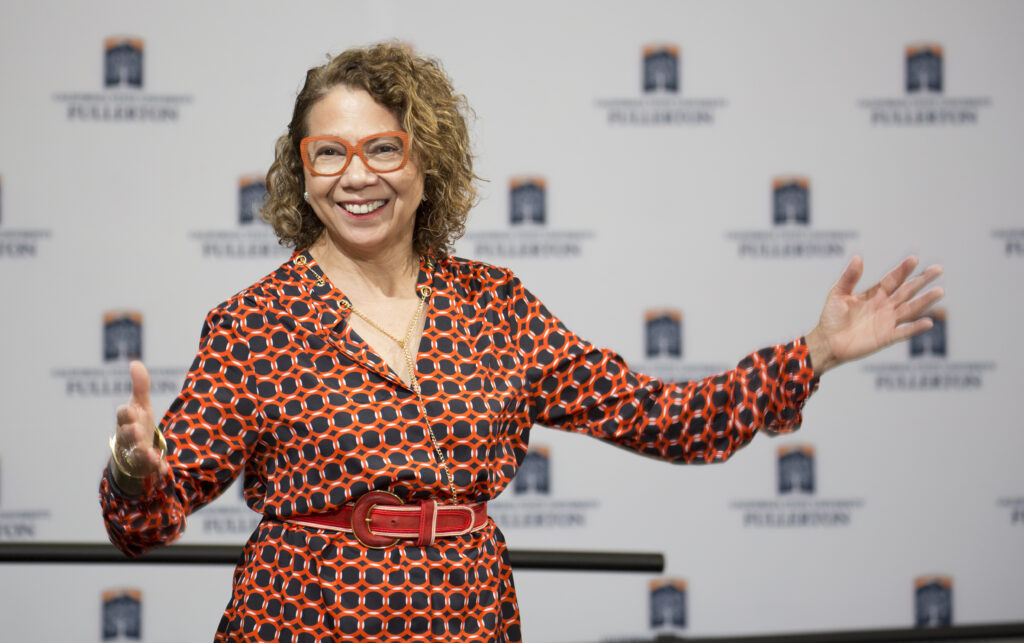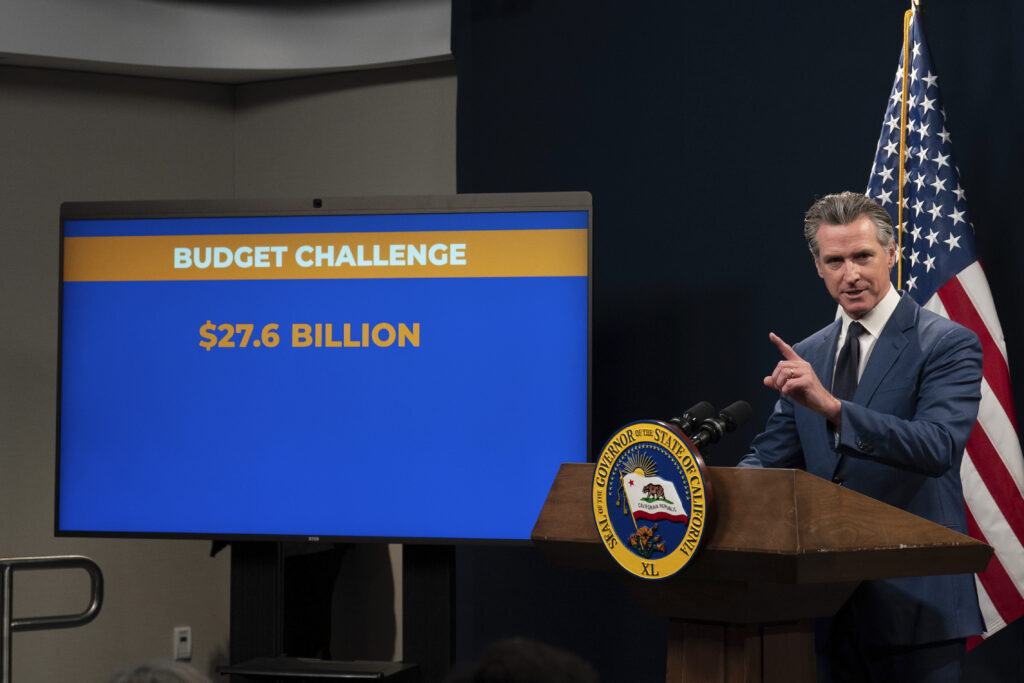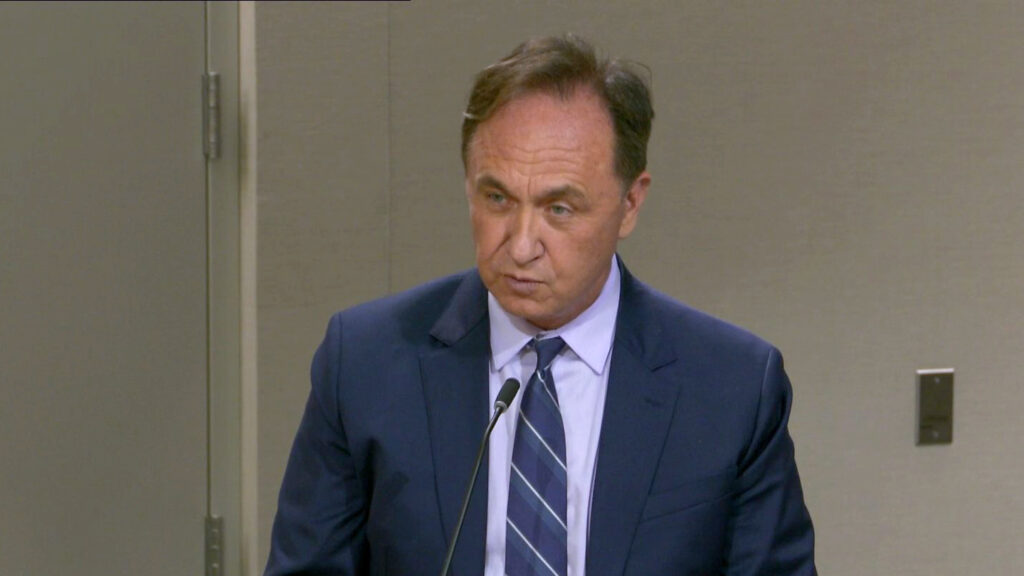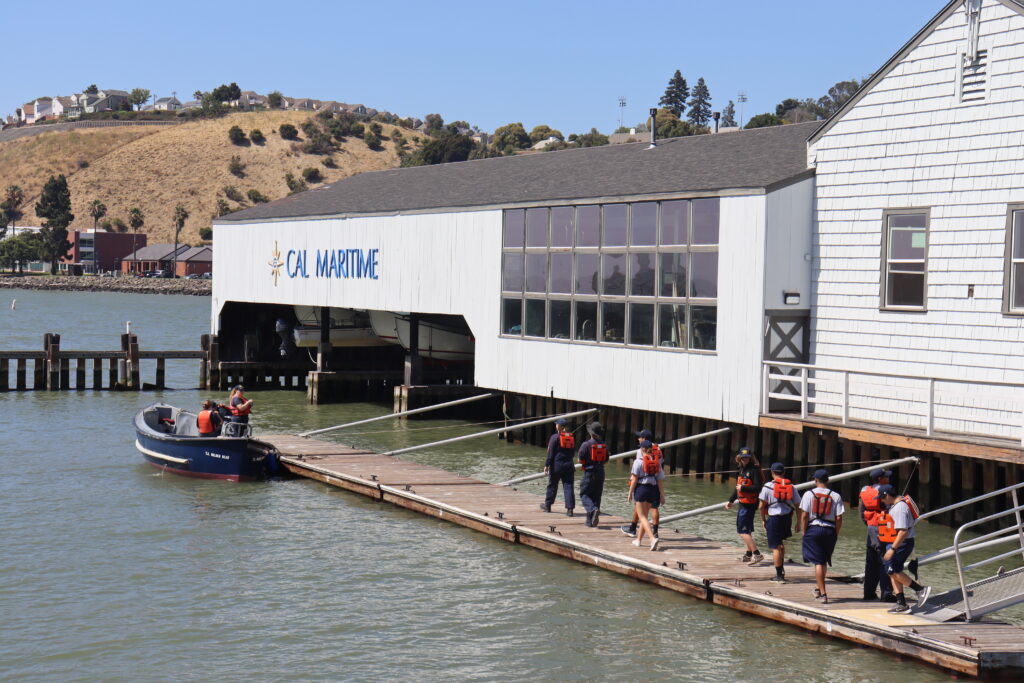
State Superintendent of Public Instruction Tony Thurmond, center, stands with Mickey and Minnie Mouse, alongside Lisette Estrella-Henderson, center right, the Solano County Superintendent of Schools, at Disneyland in Anaheim during the California School Recognition Program in 2019.
Credit: Lisette Estrella-Henderson / X
California schools that have significantly improved student achievement will be honored in a ceremony hosted by the California Department of Education at Disneyland on Friday, but the $500 per person ticket price has some superintendents fuming.
Districts pay between $460 and $500 per person to attend the California School Recognition Program Awards Ceremony, depending on when they register. They also pay the cost of employee travel to Anaheim and for their lodging. The Disneyland Hotel is offering a conference rate of $324, plus taxes and fees. Parking is $60 per vehicle.
The price tag is leaving some superintendents conflicted. Do they send teachers and other staff to celebrate their school’s success, or do they use the money to pay for other needs, such as professional development, tutors or supplies?
“The state understands that most districts, a majority of districts right now, are in budget constriction and deficit spending,” said Anne Hubbard, superintendent of the tiny 900-student TK-6 Hope Elementary School District in Santa Barbara. “And it seems just crazy that the CDE would be the host of this event, this honoring, this lifting up of education, with a price tag that just does not make sense to me.”
The annual awards ceremony celebrates California Distinguished Schools, National Blue Ribbon Schools, Green Ribbon Schools Green Achievers and Civic Learning Awards Schools. It is expected to draw 1,300 people to the hotel, according to event organizers.
The event, which has been held at the venue for decades, will cost more than half a million dollars. It is paid for with registration fees and sponsorships.
School may have a nacho party instead
Hubbard was proud and excited when she learned that Vieja Valley Elementary — one of the district’s three schools — had been named a California Distinguished School. She quickly booked a few rooms at the Disneyland Hotel and proceeded to the registration page to see if there was a limit to the number of employees she could send.
“I was completely floored when I got to the checkout and saw the price tag for attending the ceremony — $490, plus a $10 processing fee,” Hubbard said.
Hubbard asked event organizers if her staff could forgo the dinner and be in attendance to receive the award. She said she was told everyone must pay to attend. Hubbard decided it would be less expensive and more inclusive to celebrate with the entire staff and is considering a nacho bar.
Demian Barnett, superintendent/principal of nearby Peabody Charter School, will pick up the award for Vieja Valley Elementary. He and another administrator plan to make the three-hour round trip to avoid room charges. Two teachers from the school will stay overnight.
“We found a way to be able to support four people to go, but I would be using that money to do programming with kids here if I wasn’t doing this,” he said last week.
Funding help available, CDE says
The California Department of Education can not directly fund awards or recognition programs because the Legislature has not authorized it to spend taxpayer funds in this way, said Elizabeth Sanders, director of communications for the CDE.
She says honorees should first look to their district foundation to cover the cost of attending the awards dinner, but can also contact the department for help obtaining a sponsor or a scholarship, if funds are available. Honorees who do not attend will receive their award by mail at no charge, she said.
A check of the registration website last week found no mention of scholarships, and superintendents who spoke to EdSource were not aware that funding could be available.
The only district team that directly requested financial assistance this year has been able to find local support and is registered for the event, Sanders said.
Photos and giant mice
The California School Recognition Program Awards Ceremony will start at 10 a.m. with group photos taken throughout the day, according to the California Department of Education registration webpage.
Guests can also wait in line to take photos with Superintendent of Public Instruction Tony Thurmond, passing sponsor and district booths as they move along. Mickey and Minnie Mouse are on hand for photos as well.
The awards dinner begins at 6 p.m. with entertainment usually provided by student musicians, according to past attendees. It is scheduled to last three hours.
Distance can make travel costs prohibitive
Ferndale Unified in Humboldt County will spend more than $10,000 from its general fund to send Principal/Superintendent Danielle Carmesin and two Ferndale Elementary School teachers to Anaheim.
Because of the school’s distance from the event — 662 miles — the school’s staff will fly to Anaheim and stay two nights.
The cost is steep for a district struggling with budget cuts, but district leaders decided it was important to celebrate the big improvements the school has made in math, English and science scores on the state’s California Assessment of Student Performance and Progress, or CAASPP tests.
“It’s all just a publicity stunt, but if you don’t show up, then that’s not fair for my school,” Carmesin said. “So they have you kind of over a barrel, and it’s like, we haven’t won it in over 10 years; my face is going to be in that picture.”
Live Oak Unified is sending half its teachers
The cost of the event is prohibitive for rural schools, said Yuri Calderon, executive director of the Small Schools Districts’ Association. Calderon said many small districts are struggling to make ends meet, and have staffing shortages that take precedence.
Live Oak Unified in rural Sutter County is sending the principal of Encinal Elementary School and two teachers to the dinner in Anaheim to collect a Distinguished School Award. The school won the award for the first time by improving test scores and suspension rates, said Superintendent Mathew Gulbrandsen.
Gulbrandsen would have sent more staff to the awards ceremony, but the cost limits the number of people who can participate, he said. Additionally, the school would have to pay substitutes $120 each to cover classes because the event is on a Friday.
“I mean that school itself is a small school — 120 students,” he said. “Five teachers, a principal, a secretary. There’s no way all of them could attend on a workday. You’d have to shut the school down. So we can’t do that.”
They want more for their money
Sanders said that a $500 registration fee is pretty standard for a daylong conference, but superintendents interviewed by EdSource said they expected more for the money — possibly some workshops or a keynote speaker.
“So, I thought, OK, is Taylor Swift playing? What’s going on? Hubbard said. “And really to find out that there is nothing, and you have to attend the banquet in order … to just pick up the award. I would have taken a team down there, taken them out to dinner for under $500 by the way.”
Hubbard said she has attended many two- and three-day conferences that include multiple meals that cost less than the awards dinner at Disneyland.
When she previously attended the National Blue Ribbon School Award celebration in Washington, D.C., Hubbard paid for travel and rooms, but no registration fee. The event included three days of speakers and workshops. Every school receives a National Blue Ribbon School flag and plaque at the awards luncheon, according to the website.
The California School Boards Association offers one free ticket to the Golden Bell Awards Ceremony to each school district or county office that wins. Each additional ticket is $150. The event, which will take place at the Hyatt Regency in Sacramento on Dec. 4, includes appetizers and dessert. It honors outstanding programs and governance practices of California school boards.
Conference breaks even
With 1,300 attending this year, the registration fees for the California School Recognition Program Awards Ceremony will bring in at least $600,000, plus contributions from corporate sponsors such as Pearson, Garner Holt Education Through Imagination, Smart School, the California State Lottery and the California Association of School Business Officials.
“We’re not accumulating a big pile of money that we kick back to the department or anything like that,” said Ed Honowitz, chief executive officer of Californians Dedicated to Education Foundation, the CDE’s nonprofit foundation. “It really is kind of essentially a break-even kind of thing. Sometimes, there’s some carryover from one year to the other, but it’s kind of minimal.”
Registration and sponsorship funds are collected, and bills for the awards event are paid by the Californians Dedication to Education Foundation, but the event is run by CDE staff, Honowitz said.
Rising conference costs are causing challenges for organizations across the state, he said.
The CDE has worked to make the conference as affordable as possible, even considering cutting the visits from Minnie and Mickey Mouse to save money, Sanders said. In the end, it was decided that the cost of the mice — a few hundred dollars, according to Sanders — was worthwhile.
Suites for top CDE executives
According to a former manager who has attended the event within the last five years, Superintendent of Public Instruction Tony Thurmond and other high-level CDE staff stayed in suites with access to a VIP area with complimentary food and beverages.
The former manager described the room as a corner suite with a kitchen, living room and bedroom, and large windows that allowed a view of the nightly fireworks at Disneyland. Similar rooms as the one described go for $1,252 at the regular rate, according to the website.
Rooms, travel and meals for volunteers and staff are paid for by sponsors and do not come from registration costs, Sanders said.
Carmesin says the cost of the event shows that CDE leaders are disconnected from the work educators do.
“You know, they think they’re celebrating us, but giving me an invoice didn’t make me feel very celebratory,” she said.

